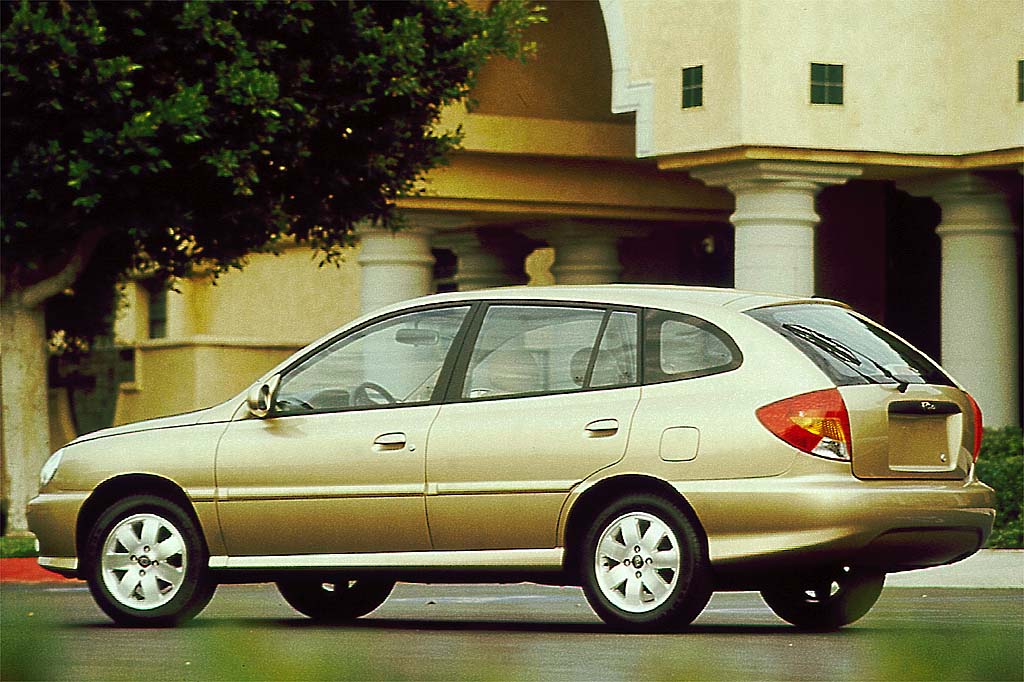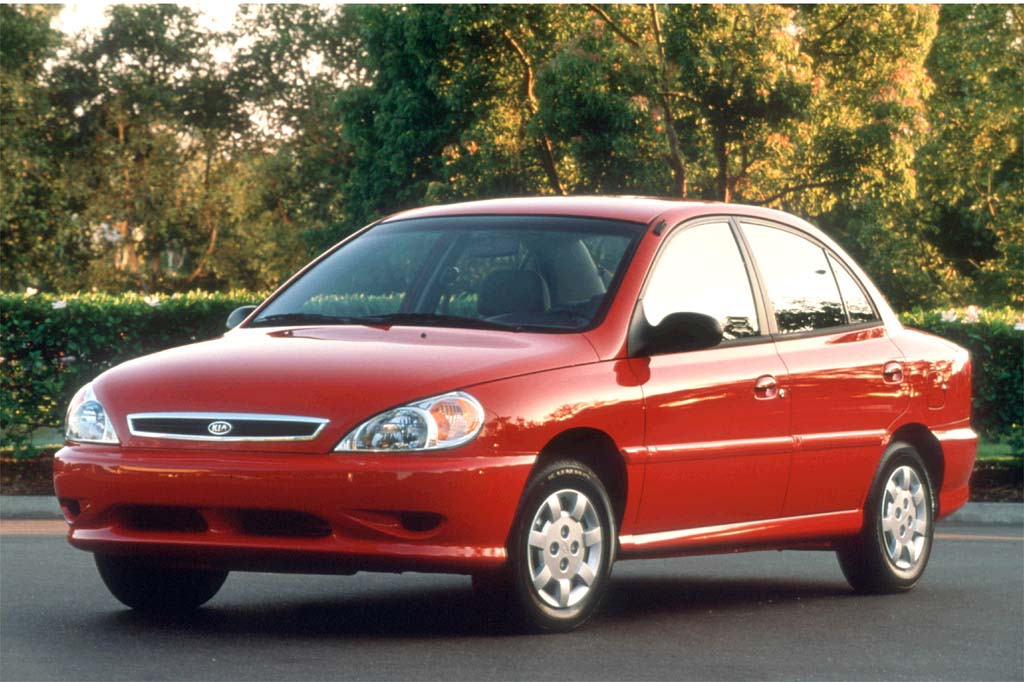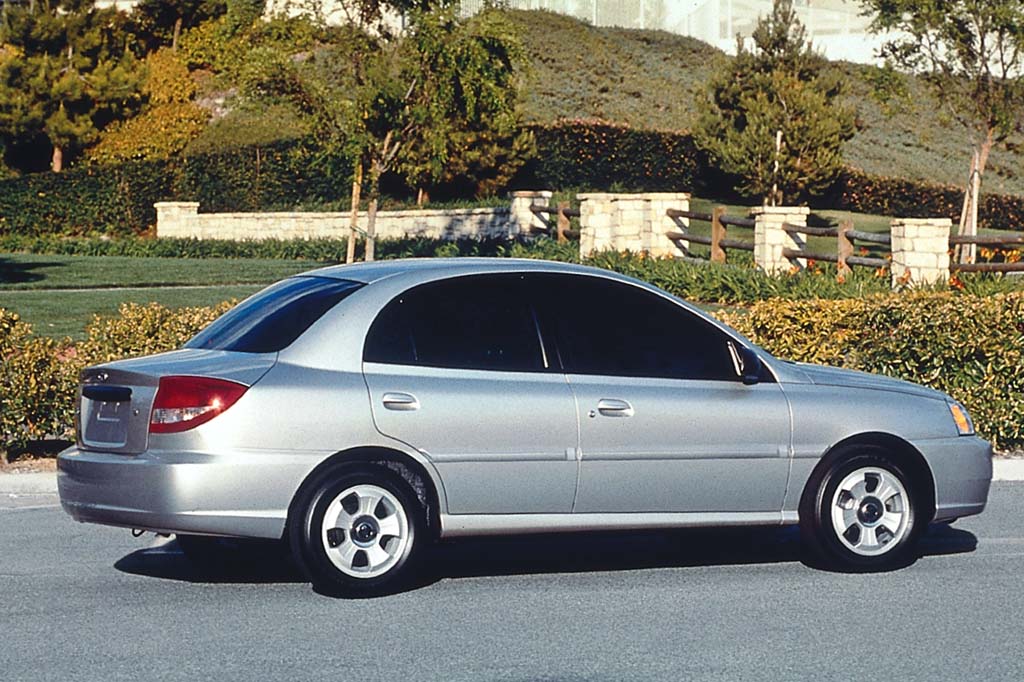| Compact car; Built in South Korea |
|
|
| Good condition price range: $1,400 – $3,700* |

2001 Kia Rio 4-door wagon

2001 Kia Rio 4-door wagon

2001 Kia Rio 4-door sedan

2002 Kia Rio Cinco 4-door wagon interior

2003 Kia Rio 4-door sedan
| Pros: |
|
| Cons: |
|
Rios offer “cheap wheels” economy and a generous warranty, but Kia’s resale values are low, partly due to its unproven record of reliability and low ratings on independent surveys of customer satisfaction. Toyota’s Echo might be more desirable, but low resale values on a Kia translate to more appealing used-car prices.
Overview
For 2001, Kia introduced a new front-drive subcompact sedan, smaller and less expensive than the Sephia and Spectra. In fact, the entry-level Rio was billed as one of the lowest-priced cars sold in the U.S., starting at just $8585.
Derived from the 1995-97 Ford Aspire hatchback that had been designed and built by Kia, the Rio had new four-door sedan styling and updated powertrains. Sole engine was a 1.5-liter twincam four-cylinder, driving either a manual transmission or an optional four-speed automatic.
Standard equipment included a rear-window defroster, center console, and full cloth interior trim. Antilock braking was optional. Air conditioning, a rear spoiler and alloy wheels also were options. An “Upgrade Package” added power steering with a tilt wheel, full wheel covers, body-color side moldings, and visor vanity mirrors.
Kia’s new Long Haul Warranty was similar to Hyundai’s: 5-year/60,000-mile basic, 10/100,000 powertrain, 5/100,000 rust, and 5/unlimited-mileage roadside assistance. Hyundai was Kia’s corporate parent in South Korea. Competitors included the similarly budget-priced Daewoo Lanos and Hyundai Accent, as well as the Toyota Echo, Nissan Sentra, Ford Focus, and Honda Civic.
Yearly Updates
| 2002 Rio For 2002, 14-inch wheels replaced the original 13s as standard fare. More notable, Kia launched another body style. In 2002, the Rio came in both sedan and wagon form, sharing the four-cylinder engine and manual or optional automatic transmission. Called the Cinco, the wagon included power steering and a tilt steering wheel. Both items were included with the sedan’s upgrade package. ABS and air conditioning were optional. Side airbags and power windows were unavailable. |
| 2003 Rio Freshened styling and a bigger engine marked the 2003 Rios. Kia’s mini-sized models also got a revised interior, chassis modifications, and more standard and optional features. The new 1.6-liter four-cylinder produced 105 horsepower (9 more than before). Power windows were newly available, and power locks were optional. New standard features included rear-seat heater ducts, cupholders in front-door map pockets, and a CD player for the Cinco wagon. New options included fog lights and a rear spoiler for the Cinco. Engine mounts, the exhaust system and steering system were modified to reduce noise and vibration. Suspension alterations improved ride comfort, while larger front brakes boosted stopping power. Side airbags were still not offered. |
| 2004 Rio The Rio’s wagon version got standard alloy wheels in 2004. |
| 2005 Rio Kia’s Rio is unchanged for 2005. |
